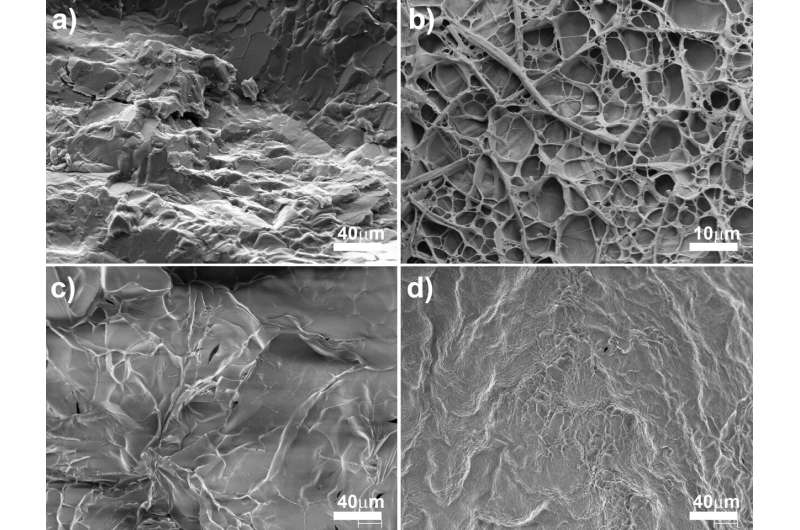This article has been reviewed according to Science X's editorial process and policies. Editors have highlighted the following attributes while ensuring the content's credibility:
fact-checked
peer-reviewed publication
proofread
How collagen works in medical treatment

Scientists at the NMI have unraveled the mode of action of collagen crosslinking in the treatment of corneal defects and the results open up new opportunities for the use of collagen in medicine.
Collagen has been used in ophthalmology since the 1990s, particularly in the treatment of corneal defects. However, why and how this technique works was only known in theory.
Researchers at the NMI Natural and Medical Sciences Institute in Reutlingen led by Lu Fan have found the necessary evidence and can now reliably explain how this technique works. "Our results close a regulatory gap and at the same time open up new opportunities in the application of collagen, even beyond ophthalmology," explains scientist Lu Fan. The work is published in the journal Advanced Functional Materials.
Collagen is the most common protein in the body of animals, including humans. It plays an important role e.g. in the structure of bones, teeth, tendons, ligaments and skin. Scientists see an opportunity to "repair" defective areas with collagen.
UV collagen crosslinking (CXL) is used to treat a defective cornea. To do this, the cornea is first treated with riboflavin (also known as vitamin B2) and the area is then irradiated with UVA light. The resulting free radicals then ensure that additional cross-linking occurs within the collagen fibers of the cornea, making it more stable.
"These findings allow us to optimize the treatment, making it both more reliable and gentler," explains Xin Xiong, NMI scientist from the research team. The more precise dosing that is now possible also minimizes the potential risks. However, the researchers are already looking beyond the treatment of the cornea.
As collagen is found in many parts of the body, there could also be potential for treating other diseases. This repair or regeneration of collagen-based tissue seems conceivable in wound healing, bone replacement, dentistry and cardiovascular diseases, for example. However, further research is required.
The results are also a success for the MDR & IVDR Competence Center (MIK) of the NMI and Hahn-Schickard. One of MIK's aims is to develop analytical and testing methods that are not yet available and to support companies in the development of innovative ideas through to certification. MIK was created in response to stricter regulations on medical devices (MDR) and in-vitro diagnostics (IVDR), which pose major challenges for small and medium-sized companies in the industry in particular.
More information: Lu Fan et al, Deciphering UVA/Riboflavin Collagen Crosslinking: A Pathway to Improve Biomedical Materials, Advanced Functional Materials (2024). DOI: 10.1002/adfm.202401742



















